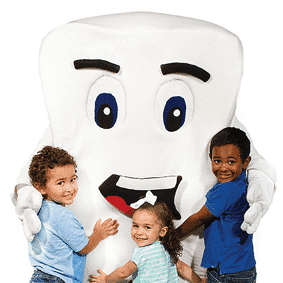Pacifiers can be a source of soothing comfort for many infants and toddlers; however, parents often wonder about the long-term effects that pacifier use can have on their child’s dental development. At Tebo Dental, we aim to provide clarity on this topic, outlining the benefits and potential drawbacks to help you make informed decisions for your child’s oral health as they navigate their early childhood years.
The Good – Benefits of Pacifier Use
When used appropriately, pacifiers can offer several benefits to young children, including:
- Soothing Effect: Pacifiers often provide a sense of comfort and security and can help calm a fussy baby.
- SIDS Prevention: Studies suggest that pacifier use during sleep can help reduce the risk of Sudden Infant Death Syndrome (SIDS).
- Pain Relief: During teething or minor medical procedures, a pacifier can provide temporary pain relief.
The Bad – Potential Dental Concerns
Prolonged use of pacifiers can lead to dental issues, such as:
- Misalignment of Teeth: Extended pacifier use, especially beyond the age of three, can cause the upper front teeth to protrude or the lower teeth to tilt inward.
- Bite Problems: Persistent use of pacifiers can lead to an open bite or crossbite, where the teeth do not align properly when the mouth is closed.
- Impact on Jaw Development: Continuous sucking on a pacifier can affect the growth of the jaw and the proper alignment of teeth.
The Ugly – Long-Term Effects of Improper Use
When not managed properly, long-term pacifier use also can result in more severe issues, such as:
- Speech Development Issues: Prolonged pacifier use can impede proper tongue movement and affect speech development.
- Dependency: Some children may become overly dependent on pacifiers, making it challenging to wean them off.
- Increased Risk of Ear Infections: Frequent sucking can alter the pressure in the ear, potentially leading to more ear infections.
Best Practices for Pacifier Use
To balance the benefits and mitigate the risks of pacifier use, consider these best practices:
- Limit Its Use: Try to restrict pacifier use to nap times and bedtime, which will reduce overall usage as your child continues to grow.
- Choose Orthodontic Pacifiers: Opt for pacifiers designed to minimize dental impact, such as those with a flatter nipple and/or a shape that supports the natural alignment of teeth.
- Wean Gradually: Begin weaning your child off the pacifier by age two to three. Use of positive reinforcement and gradual reduction methods can help encourage a smooth transition.
- Regular Dental Check-Ups: Starting from your child’s first birthday, schedule regular dental visits to monitor and manage any early signs of dental issues.
Alternatives to Pacifiers
Consider using other soothing techniques to reduce your child’s reliance on pacifiers, such as:
- Comfort Objects: Encourage the use of a favorite blanket or stuffed animal as an alternative source of comfort.
- Self-Soothing Techniques: Help your child develop self-soothing habits, such as gentle rocking or listening to calming music.
Pacifiers have their place in early childhood development; however, it is important to be mindful of the impact they can have on your child’s dental health over time. At Tebo Dental, we are here to support you in making the best choices for your child’s oral health as you navigate appropriate pacifier use.
Need Guidance on Pacifier Use? If you have concerns about your child’s pacifier use and its impact on their dental development, schedule a consultation with Tebo Dental today. Our team of pediatric dental specialists is here to provide personalized advice and care for your little one’s smile.





